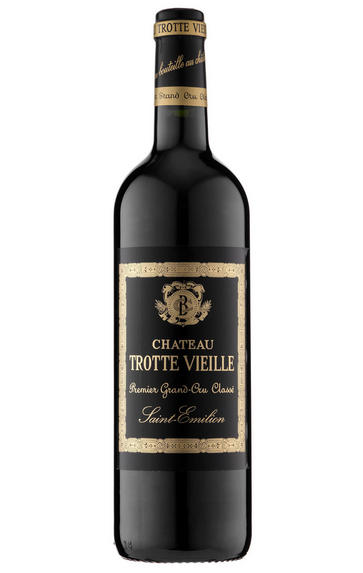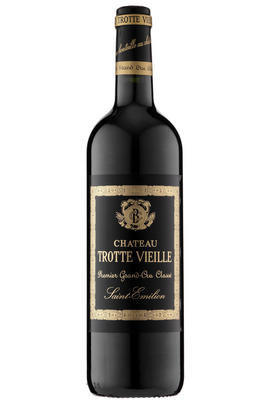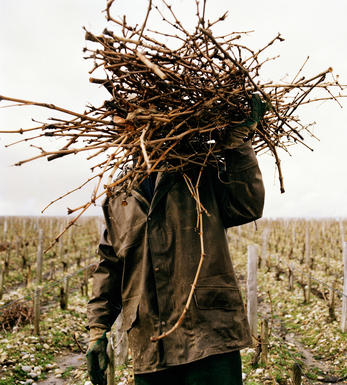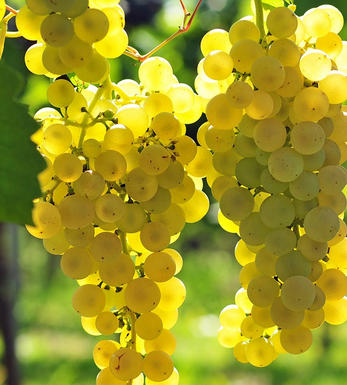
2022 Château Trotte Vieille, St Emilion, Bordeaux

Critics reviews
The 2022 Trotte Vieille represents the first year when all the Cabernet Sauvignon entered the Grand Vin (5%). Picked from 2 to 27 September, it is aged entirely in new oak. It has an intense bouquet that is well-defined albeit coated with the oak at the moment - this will be subsumed with time. There is an underlying orange pith/tangerine element lending nuance. The palate is very harmonious on the entry with pliant tannins. Very precise, silky smooth in texture thanks to the use of their new cuveries equipped with smaller vats. The acidity is nicely judged, opulent yet controlled with a touch of white pepper right on the finish. Very stylish.
Drink 2032-2060
William Kelley, Wine Advocate (April 2023)
The 2022 Trotte Vieille is composed of 50% CS, 45% Merlot, and 5% Cabernet Franc - less Cabernet Franc this year because the Cabernet Sauvignon was so good. Deep garnet-purple in color, it bursts from the glass with evocative notes of redcurrant jelly, warm cassis, baked plums, and candied violets, giving way to suggestions of licorice, tar, and black truffles. The full-bodied palate explodes with vibrant, expressive black berry and earthy flavors, framed by beautifully ripe, plush tannins and fantastic freshness, finishing very long and fragrant. This is stunning.
Drink 2030-2062
Lisa Perrotti-Brown, The Wine Independent (May 2023)
Jane Anson, janeanson.com (May 2023)
The quality of the 2022 Trotte Vieille took me by surprise, but clearly more diligent viticulture, combined with a new winery equipped with fully 26 vats for the estate's 11 hectares of vineyards, is beginning to pay off, as this is the most complete, integrated young wine I have ever tasted at this address. Unwinding in the glass with aromas of dark berries, rose petals, violets and incense, it's medium to full-bodied, layered and concentrated, with a deep core of vibrant fruit, beautifully refined tannins and a long, saline finish. A blend of fully 50% Cabernet Franc, 5% Cabernet Sauvignon and 45% Merlot, it derives exclusively from Trotte Vieille's historic clay-limestone walled vineyard.
William Kelley, Wine Advocate (April 2023)
The most structured and impressive Trottevieille I have ever tasted. It is full-bodied yet compacted with a fine velvet texture. Intense finish with super tension and focus. Could move up a notch.
James Suckling, JamesSuckling.com (April 2023)
My rough note on the 2022 Château Trotte Vieille included more than one expletive, and this beauty is straight-up gorgeous. Vivid blue fruits, violets, flowers, and chocolate all make an appearance on the nose, and it hits the palate with full-bodied richness, a seamless, layered texture, perfect tannins, and nicely integrated oak. Based on 50% Cabernet Franc, 45% Merlot, and the rest Cabernet Sauvignon, it remains to be seen if this will ultimately match the magical 2020, but we're not far off. This is a château readers need to have on their radar.
Jeb Dunnuck, JebDunnuck.com (May 2023)
About this WINE

Chateau Trotte Vieille
A 1er Grand Cru Classé (B) St. Emilion château which has been owned by the négociant house Borie-Manoux since 1949. The company also owns Château Batailley in Pauillac and Château Beau Site in St-Estèphe and is now run by Philippe Castéja. Trotte Vieille (the trotting old lady) refers to the legend of an old woman who lived here in the 18th century and spent her time trotting around in search of local gossip.
The property is located on a plateau east of St-Emilion and the 10-hectare walled vineyard is planted with Merlot (50%), Cabernet Franc (45%) and Cabernet Sauvignon (5%). The grapes are hand-harvested and then fermented in small, temperature-controlled concrete vats. The wine is matured in oak barriques (80% new) for 18 months. It is bottled unfiltered.

St Émilion
St Émilion is one of Bordeaux's largest producing appellations, producing more wine than Listrac, Moulis, St Estèphe, Pauillac, St Julien and Margaux put together. St Emilion has been producing wine for longer than the Médoc but its lack of accessibility to Bordeaux's port and market-restricted exports to mainland Europe meant the region initially did not enjoy the commercial success that funded the great châteaux of the Left Bank.
St Émilion itself is the prettiest of Bordeaux's wine towns, perched on top of the steep limestone slopes upon which many of the region's finest vineyards are situated. However, more than half of the appellation's vineyards lie on the plain between the town and the Dordogne River on sandy, alluvial soils with a sprinkling of gravel.
Further diversity is added by a small, complex gravel bed to the north-east of the region on the border with Pomerol. Atypically for St Émilion, this allows Cabernet Franc and, to a lesser extent, Cabernet Sauvignon to prosper and defines the personality of the great wines such as Ch. Cheval Blanc.
In the early 1990s there was an explosion of experimentation and evolution, leading to the rise of the garagistes, producers of deeply-concentrated wines made in very small quantities and offered at high prices. The appellation is also surrounded by four satellite appellations, Montagne, Lussac, Puisseguin and St. Georges, which enjoy a family similarity but not the complexity of the best wines.
St Émilion was first officially classified in 1954, and is the most meritocratic classification system in Bordeaux, as it is regularly amended. The most recent revision of the classification was in 2012

Chasselas
A white grape variety that is believed to have originated in Egypt. It takes its name from a village in the Saone-et-Loire departement where it is grown to produce Pouilly-sur-Loire. It is widely planted around the world though more often as a table grape than for wine production.
In Germany it is known as Weisser Gutedel, and in France is often known as Chasselas de Moissac. It is the most widely planted variety in Switzerland where it is known as Fendant.
It was first planted in Alsace in the 17th century and is generally blended with other grapes and sold as Edelzwicker. The authorities are not keen on the grape and have banned any new plantings. It is a relatively easy variety to cultivate although its naturally high vigour means it is not suited to very dry and very fertile soils.


Buying options
Add to wishlist
Description
The second vintage from the smartly equipped new cellars, this is a seriously good wine. There is very old Cabernet Franc here, which gives the wine a real textural lift – although at present the palate is rather dominated by the 100% new oak. There is plenty to admire here and time in the bottle will be kind, but there remains something a little monolithic that prevents this being a first-division candidate. Nonetheless, its lush blueberry pie and rich plum notes are compelling, and the wine is as good, if not better, than it has ever been.
Cabernet Franc 50%; Merlot 45%; Cabernet Sauvignon 5%
Drink 2030-2050
Score: 16.5/20
Berry Bros. & Rudd (April 2023)
wine at a glance
Delivery and quality guarantee